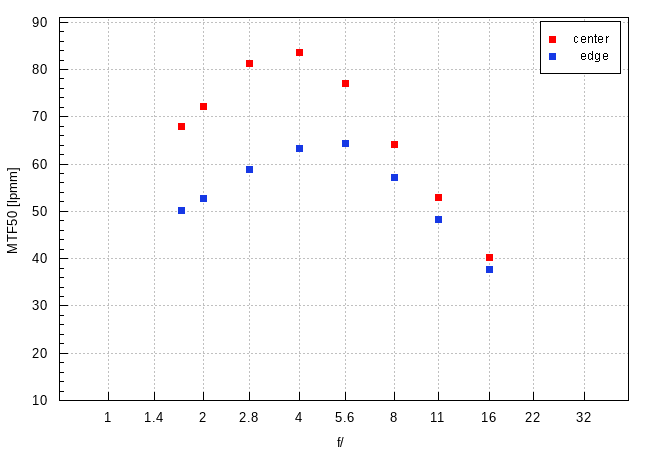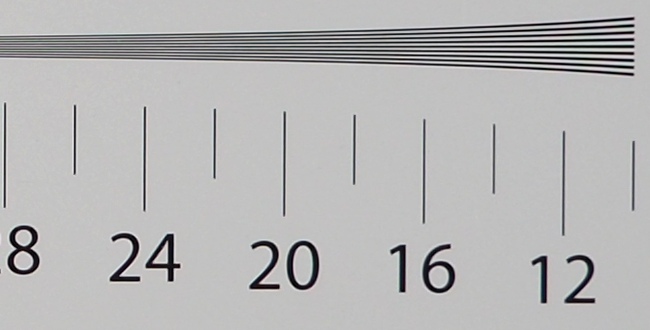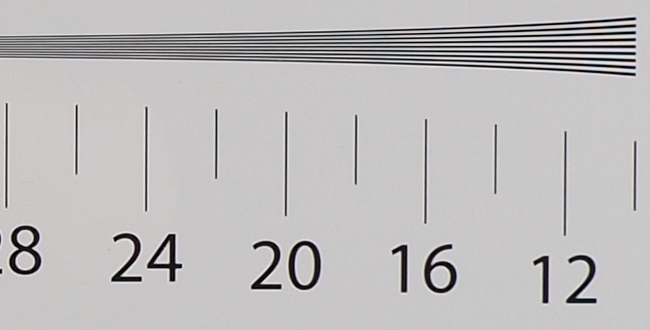Panasonic Leica DG Summilux 9 mm f/1.7 ASPH
4. Image resolution
Let's see how the tested lens compares here – its results in the frame centre and on the edges presents a graph shown below.

Please Support UsIf you enjoy our reviews and articles, and you want us to continue our work please, support our website by donating through PayPal. The funds are going to be used for paying our editorial team, renting servers, and equipping our testing studio; only that way we will be able to continue providing you interesting content for free. |
- - - - - - - - - - - - - - - - - - - - - - - - - - - - - - - - - - - - - - - - - - - - - - - -
Taking into account the parameters of the tested lens and its physical dimensions, the performance in the frame centre should be assessed very high. It's true there are no resolution records but still the results are excellent. Already at the maximum relative aperture you deal with a very high level of almost 68 lpmm; what's more, it improves pretty quickly on stopping down the lens. The peak of its performance the PanaLeica reaches by f/4.0, where you deal with a very high resolution, amounting to almost 84 lpmm.
Looking at the dimensions of this lens and its aperture fastness I feared it might perform not that well on the edge of the frame. After all correcting a field of 100 degrees is very difficult indeed; usually it is done simply by constructing big instruments which are also optically complex.
Taking into account all the circumstances it seems the Panasonic Leica DG Summilux 9 mm f/1.7 ASPH dealt sensibly well with the problem. At the maximum relative aperture the lens lands on the borderline of the decency level and on stopping down the aperture it is able to exceed values of 60 lpmm which is pretty good.
To sum up the PanaLeica is a small, lightweight lens, able to provide excellent image quality in the frame centre and quite sensible resolution on the edges, being also rather fast aperture-wise. As you can see, it would be difficult to complain here.
At the end of this chapter we present crops taken from photos of our resolution testing charts, saved as JPEG files along RAW files that we used for the analysis above.
| Olympus E-M5 II, JPEG, f/1.7 |
 |
| Olympus E-M5 II, JPEG, f/4.0 |
 |






